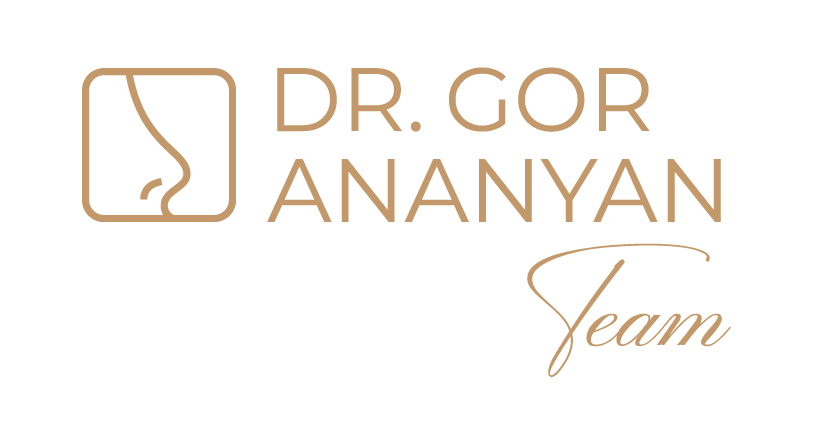LASER-ASSISTED ENDOSCOPIC
DACRYOCYSTORHINOSTOMY (DCR)
To understand the procedure, let's first understand how the tear drainage system works.
Normally, tears wash the eye and then drain through tiny openings (puncta) in the inner
corner of the eyelids into the lacrimal sac, and from there, down the nasolacrimal duct into
the nasal cavity. This is why we get a runny nose when we cry.
If the nasolacrimal duct becomes blocked for any reason (due to inflammation, trauma, or
congenital issues), tear drainage is obstructed. This leads to two main problems:
1. Persistent Tearing (Epiphora): Tears cannot drain into the nose and spill over the
eyelid, causing constant discomfort.
2. Dacryocystitis: In the lacrimal sac where tears stagnate, bacteria begin to multiply,
causing recurrent purulent inflammation, which manifests as a painful swelling in
the inner corner of the eye.
Dacryocystorhinostomy (DCR) is a microsurgical operation aimed at creating a new
bypass for tears to drain from the lacrimal sac directly into the nasal cavity, bypassing the
blocked nasolacrimal duct.
Laser-assisted endoscopic DCR is the most modern, minimally invasive, and aesthetic
way to perform this surgery. It is performed through the nose using an endoscope and a
laser, which avoids external incisions and facial scars.
How is the Surgery Performed?
Laser endoscopic DCR is usually performed on an outpatient basis or with a 1-day hospital
stay.
1. Anesthesia: The surgery can be performed under general anesthesia or local
anesthesia with sedation. The choice depends on the patient's preference and1
the anesthesiologist's recommendation.
2. Surgical Stage: The patient is in a supine position. The surgeon inserts a thin
endoscope into the nostril. Under video guidance, the location of the lacrimal sac is
identified. Then, using a laser fiber, a new opening between the lacrimal sac and
the nasal cavity is carefully created.
3. Stenting (if necessary): To prevent the new opening from closing in the early
postoperative period, a thin silicone stent may be placed through the tear ducts
and the new opening. The stent is a thin tube, not felt by the patient, and does not
interfere with vision.
4. Completion: The operation concludes without any sutures. Nasal packing is
usually not required.
The surgery duration is typically 30 to 60 minutes.
Advantages of Laser DCR in Our Clinic
Advantages of Laser DCR in Our Clinic
• No Facial Scars: The entire operation is performed through the nose, keeping your
appearance flawless.
• High Efficacy: The success rate of the surgery in eliminating tearing and
dacryocystitis exceeds 95%.
• Minimal Trauma: The use of a laser and endoscope minimizes tissue damage,
resulting in virtually no bruising, swelling, or pain.
• Fast Recovery: Most patients can return to work and their usual life within a few
days.
• Experienced Surgeons: The surgery is performed by highly qualified specialists
who are proficient in endoscopic and laser surgery techniques.
• Modern Equipment: We use advanced laser and endoscopic systems, ensuring
the precision and safety of the intervention.
Frequently Asked Questions (FAQ) about Laser DCR
1. How painful is this operation?
The surgery is performed under anesthesia and is completely painless. Postoperatively,
pain is generally absent or minimal and is easily relieved by standard pain medications,
which are often not even required.
2. Will I have a black eye?
With endoscopic laser DCR, unlike external DCR, black eyes and significant swelling
around the eye are generally absent, as facial tissues are not traumatized.
3. What is a silicone stent, and is it always necessary?
A silicone stent is a very thin and flexible tube temporarily placed in the new tear ducts to
prevent them from closing during the healing process. The decision to place it is made by
the surgeon during the operation. The stent does not interfere with vision and is not felt by
the patient.
4. How long will I be in the hospital?
Most often, the surgery is performed on an outpatient basis, and the patient can go home
the same day. In some cases, a 1-day hospital stay may be required.
5. What is the likelihood that the tearing will return?ПРОЦЕДУРЫ / PROCEDURES
The effectiveness of laser endoscopic DCR is very high. With adherence to all
recommendations and proper surgical technique, the recurrence rate (closure of the
opening) does not exceed 5-7%. The result of the surgery is considered permanent.
